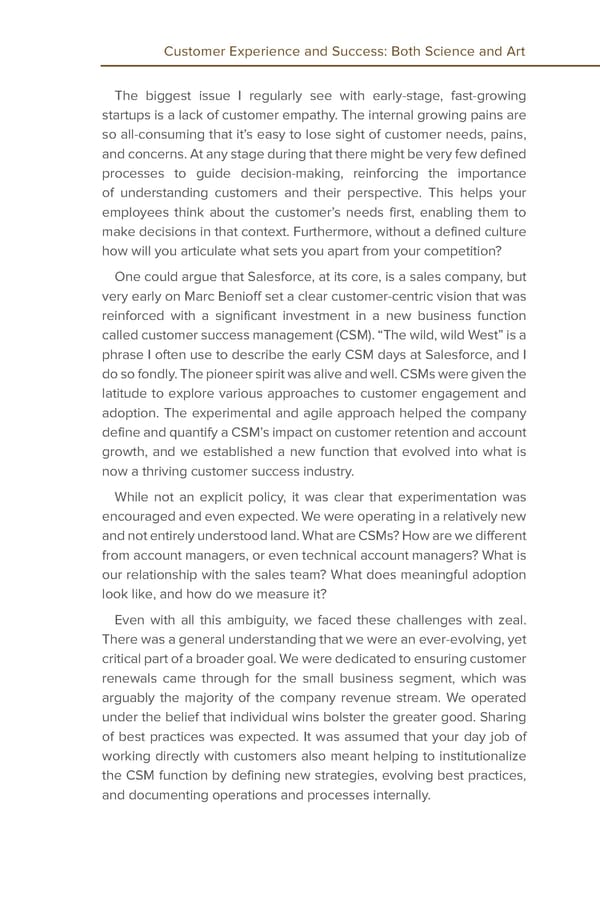Chapter 8 Customer Experience and Success: Both Science and Art The biggest issue I regularly see with early-stage, fast-growing startups is a lack of customer empathy. The internal growing pains are so all-consuming that it’s easy to lose sight of customer needs, pains, and concerns. At any stage during that there might be very few defined processes to guide decision-making, reinforcing the importance of understanding customers and their perspective. This helps your employees think about the customer’s needs first, enabling them to make decisions in that context. Furthermore, without a defined culture how will you articulate what sets you apart from your competition? One could argue that Salesforce, at its core, is a sales company, but very early on Marc Benioff set a clear customer-centric vision that was reinforced with a significant investment in a new business function called customer success management (CSM). “The wild, wild West” is a phrase I often use to describe the early CSM days at Salesforce, and I do so fondly. The pioneer spirit was alive and well. CSMs were given the latitude to explore various approaches to customer engagement and adoption. The experimental and agile approach helped the company define and quantify a CSM’s impact on customer retention and account growth, and we established a new function that evolved into what is now a thriving customer success industry. While not an explicit policy, it was clear that experimentation was encouraged and even expected. We were operating in a relatively new and not entirely understood land. What are CSMs? How are we different from account managers, or even technical account managers? What is our relationship with the sales team? What does meaningful adoption look like, and how do we measure it? Even with all this ambiguity, we faced these challenges with zeal. There was a general understanding that we were an ever-evolving, yet critical part of a broader goal. We were dedicated to ensuring customer renewals came through for the small business segment, which was arguably the majority of the company revenue stream. We operated under the belief that individual wins bolster the greater good. Sharing of best practices was expected. It was assumed that your day job of working directly with customers also meant helping to institutionalize the CSM function by defining new strategies, evolving best practices, and documenting operations and processes internally.
 Customer Experience and Success Page 4 Page 6
Customer Experience and Success Page 4 Page 6